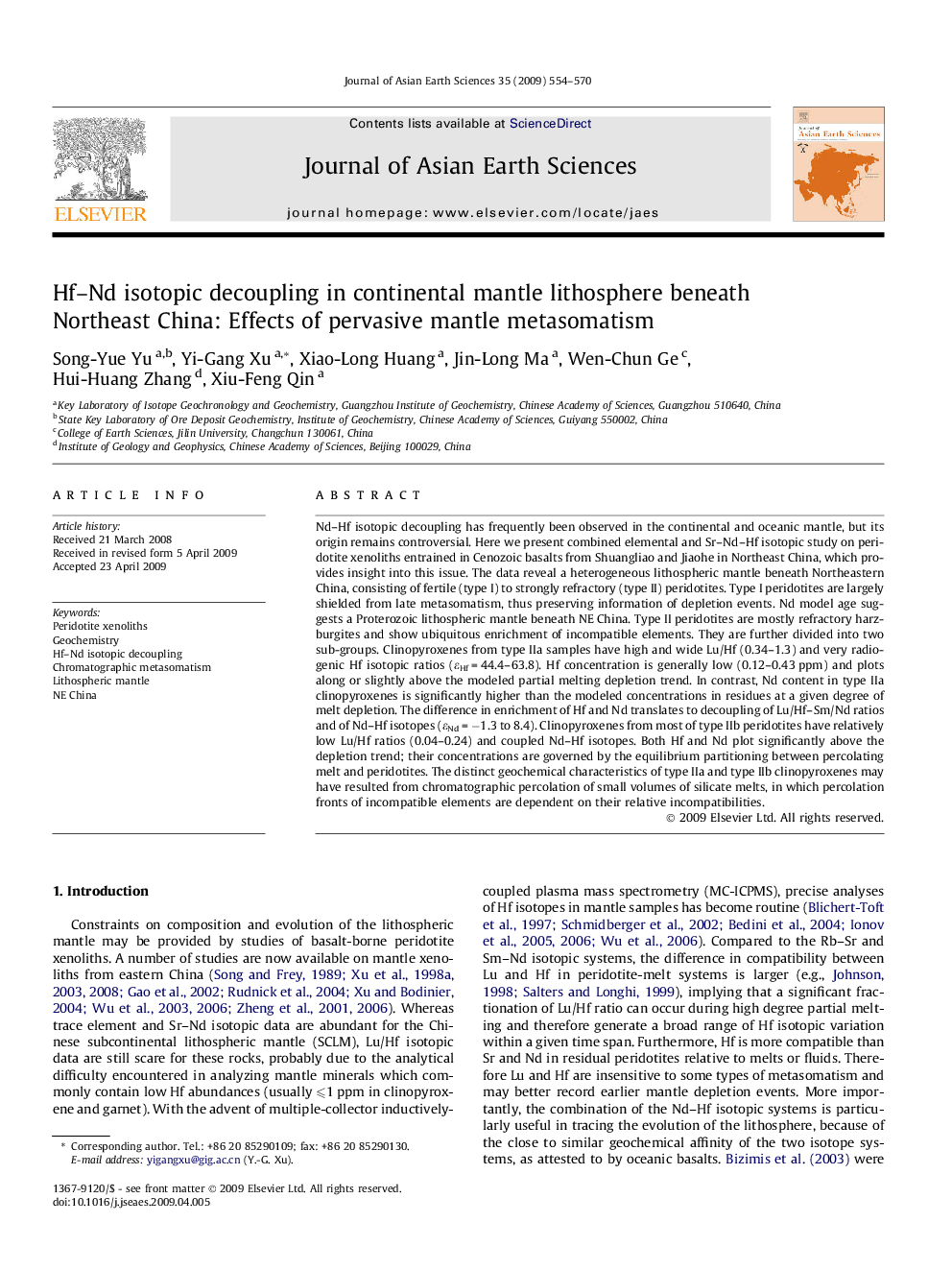| Article ID | Journal | Published Year | Pages | File Type |
|---|---|---|---|---|
| 4732116 | Journal of Asian Earth Sciences | 2009 | 17 Pages |
Nd–Hf isotopic decoupling has frequently been observed in the continental and oceanic mantle, but its origin remains controversial. Here we present combined elemental and Sr–Nd–Hf isotopic study on peridotite xenoliths entrained in Cenozoic basalts from Shuangliao and Jiaohe in Northeast China, which provides insight into this issue. The data reveal a heterogeneous lithospheric mantle beneath Northeastern China, consisting of fertile (type I) to strongly refractory (type II) peridotites. Type I peridotites are largely shielded from late metasomatism, thus preserving information of depletion events. Nd model age suggests a Proterozoic lithospheric mantle beneath NE China. Type II peridotites are mostly refractory harzburgites and show ubiquitous enrichment of incompatible elements. They are further divided into two sub-groups. Clinopyroxenes from type IIa samples have high and wide Lu/Hf (0.34–1.3) and very radiogenic Hf isotopic ratios (εHf = 44.4–63.8). Hf concentration is generally low (0.12–0.43 ppm) and plots along or slightly above the modeled partial melting depletion trend. In contrast, Nd content in type IIa clinopyroxenes is significantly higher than the modeled concentrations in residues at a given degree of melt depletion. The difference in enrichment of Hf and Nd translates to decoupling of Lu/Hf–Sm/Nd ratios and of Nd–Hf isotopes (εNd = −1.3 to 8.4). Clinopyroxenes from most of type IIb peridotites have relatively low Lu/Hf ratios (0.04–0.24) and coupled Nd–Hf isotopes. Both Hf and Nd plot significantly above the depletion trend; their concentrations are governed by the equilibrium partitioning between percolating melt and peridotites. The distinct geochemical characteristics of type IIa and type IIb clinopyroxenes may have resulted from chromatographic percolation of small volumes of silicate melts, in which percolation fronts of incompatible elements are dependent on their relative incompatibilities.
